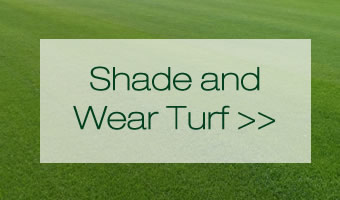Lawn disease is a common problem in the UK due to the wet mild weather.
However, most diseases can be easily avoided by a few simple steps:
- Buy disease free lawn turf.
- Check PH levels of your soil and adjust with granular lime if needed.
- Fertilise your lawn but don't over-fertilise
- Do not water the lawn once the turf is established (unless advised otherwise due to varied seed mix).
- Mow regularly with a well serviced mower.
- Make sure the mower is collecting all of the cuttings.
Identifying and treating lawn disease:
Lawn disease treatments/chemicals are changing regularly so the chemicals recommended may of been discontinued. You should ask your local garden centre or lawn specialist for the latest products.
|
COMMON NAME |
DESCRIPTION |
PREVENTION |
CHEMICAL |
| Snowmold |
Snowmold is most common to smooth stalk meadow grass and Fescues in regions where snow falls and sits on the lawn for extended periods of time. |
The best prevention for snowmold is to aerate often. Improving water drainage, raking leaves off lawn's surface, and follow a fertilization schedule to help prevent over-fertilization in the late-autumn can also help. |
The most common fungicide used on Snowmold is benomyl. |
| Brown Patch |
Brown Patch is most common to Smooth stalk meadow grass, Bent Grass, and ryegrasses in regions with high humidity and/or shade. Brown patch commonly starts as a small spot and can quickly spread outwards in a circular or horseshoe pattern up to a couple of feet wide. Often times, while expanding outwards, the inside of the circle will recover, leaving the brown areas resembling a smoke-ring. |
The best prevention for brown patch is to aerate often, reduce shade to effected areas, and follow a fertilization schedule to help prevent fertilization with excess amounts of nitrogen. |
The most common fungicides used on Brown Patch are: benomyl, and chlorothalonil. |
| Dollar Spot |
Dollar spots are most common to Kentucky Bluegrass, Bent Grass, and Bermuda in humid climates. They get their name from their small silver dollar-like shape, but can begin as the size of a small grapefruit. Usually looks brown or straw-colored in appearance. The spots may merge to form large patches several feet wide Dollar spot is most common during warm, wet weather with heavy dews and in those lawns with low levels of nitrogen. |
The best prevention for brown patch is aerate often, water only in the morning hours if additional water is necessary, remove excess thatch, and follow a fertilization schedule to help increase the amount of nitrogen levels in your lawn. |
The most common fungicides used are: benomyl, anilazine, and thiophanate. Make two applications of a contact fungicide, 7-10 days apart, beginning when the disease is first evident. Damaged grass will recover if treated soon enough. |
| Fairy Rings
Basidiomycetes spp |
Fairy Rings can grow in most grasses, and are distinguishable by circular rings filled with fast-growing, dark-green grass. Around the perimeter of the ring, the grass will typically turn brown and often times grow mushrooms. Fairy rings typically grow in soils that contain wood debris and/or old decaying tree stumps. |
The best prevention for fairy ring is to aerate the diseased area, water well in the morning hours, remove excess thatch, and follow a fertilization schedule to help increase the amount of nitrogen levels in your lawn. |
No cure once established. |
| Rust |
Rust gets its name from the orange, "rusty"appearance it gives leaf blades. Most commonly effecting ryegrasses and Kentucky Bluegrass, rust tends to flourish in conditions of: morning dew, shade, high soil compaction, and low-fertility. The best way to check for rust problems is by taking a white tissue or paper towel and rubbing a few grass blades through it. If an orange color remains, then it's usually rust. |
The best prevention for rust is to aerate your lawn, water well in the morning hours, reduce shade to grass, mow more frequently and bag grass clippings; follow a fertilization schedule to help increase the amount of nitrogen levels in your lawn. If Rust has been a problem in the past, mow frequently and remove clippings from lawn. |
The most common fungicides used on Rust are: Triadimefon and Anilazine. Repeat the application every 7 - 14 days until improvement is seen. |
| Grease Spot |
Grease Spot can effect all grasses in humid climates and can be recognized by the slimy-brown patches that often have a white, cotton-like fungus around it. Grease Spot gets its name for the "greasy" appearance it makes while matting together and can appear in streaks across the lawn. |
The best prevention for Grease Spot is to aerate often, water in the morning hours only, remove excess thatch, reduce shade on lawn, and cutback on the nitrogen levels during fertilization. |
The most common fungicide used on Grease Spot is metalaxyl. |
| Red Thread (Laestisaria Fuciformis) |
Red Thread is most common to Fescues, Ryegrasses, and Kentucky Bluegrasses during times of moist and cool weather. Red Thread gets its name from the pinkish-red threads that form around the leaf blades and bind them together. Eventually, the affected grass will turn brown. It attacks only leaves and leaf sheaths and is seldom serious enough to kill a lawn. The red treads will be most visible when wet. |
The best prevention for Red Thread is aerate often and remove thatch. Mowing to proper levels, reduce shade on lawn, follow a regular fertilization schedule. Make sure to include nitrogen and potassium. |
The most common fungicide used on Red Thread is chlorothalonil. Follow label directions. Repeat the treatment two times at intervals of 7 to 10 days. |
| Powdery Mildew |
Grass looks as though it is sprinkled with flour. Kentucky bluegrass and shade areas are the most susceptible. Grass will wither and die. |
Water only in the morning; reduce shade by pruning, aerate and check drainage in the area. |
Fungicide |
| Pythium Blight |
Irregularly shaded spots of wilted brown grass. Cobweb-like mass of fungus on moist nights or mornings. Patches cluster to form streaks a foot or more wide |
Do not over fertilize or over water and don't mow when grass is wet. |
Fungicide |
| Fusarium Blight (Summer Patch) |
Light green patches that spread, turn reddish brown and then die. |
Apply a fungicide in late spring. Do not over fertilize and maintain a good watering schedule. |
Fungicide |
| Leafspot-Melting Out |
Brown to purple lesions (spots on blades. Irregular dying areas of grass lesions on grass in margins of dead area. Caused by excess nitrogen fertility and possibly excess thatch buildup |
Do not introduce additional nitrogen when fertilizing, aerate and detach lawn. |
|
| Slime Mold |
Like powdery mildew, slime molds covers grass with a powdery covering that looks almost like crystallized frost. Feeds on decaying organic matter found in the soil. As the powdery covering becomes thicker, it reduces the light reaching the plant cells, and they begin to turn yellow. |
No prevention. Usually not harmful. |
In some cases, the grass blades an be hosed off with a forceful stream of water. |


